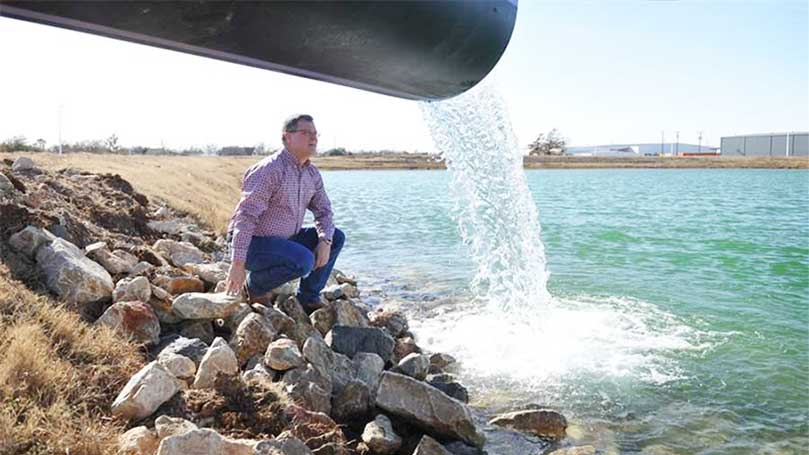
Wastewater reuse — recycling and reusing water from our wastewater sources may prompt some uneasiness as people are naturally squeamish about the idea of reusing water that comes from our toilets, even though it’s actually quite common. Wastewater reuse has been around for thousands of years. In London, a significant portion of the drinking water is indirectly recycled through the River Thames, the main water source for the British capital. This is also being done in Windhoek, Namibia, where a direct potable reuse scheme has been operating since 1965. Singapore, China and other countries are following the practice to create ‘new water’ from used water sources.
In other places, such as India, reused water can provide a valuable water source for key industries, reducing the demand on limited water resources. Power plants, refineries, mills, and factories, including, for instance, those in the auto industry, can use reclaimed water. The need is great. Not only do some 2.2 billion people around the world lack access to safely managed water services, but 80 percent of global wastewater is not adequately treated.
A research by Stanford University is telling us something that some of us may not want to stomach: recycled wastewater is not only safe to drink but may actually be less toxic than water from most other sources. We can’t survive very long without water, and that period won’t be very enjoyable either. But with the number of people living on Earth continuously growing, we have to start thinking about managing our drinking water supplies in such a way that all of us get access to this vital resource.
Wastewater recycling could help ensure that nobody needs to go thirsty, but there are concerns regarding how safe such water is for human consumption. That being said, new research now comes to explain that such concerns aren’t grounded in fact. Not only is recycled wastewater safe to drink, the team explains, but it can actually be safer and less toxic than drinking water obtained from a wide range of other sources.
The researchers at Stanford University found that the quality of the reuse water, particularly the reverse-osmosis-treated water was comparable to groundwater, which is traditionally considered the highest quality water.
The research focused on comparing samples of conventional drinking water to purified wastewater, also known as potable reuse water. They did this by applying the water to hamster ovary cells, which are known to be very similar to human cells. They would then be monitored to see if their development slowed or stopped altogether compared to untreated cells. This approach, the team explains, allows them to gauge the toxicity of the chemicals contained in each water sample as a whole, including compounds specified in and monitored by Environmental Protection Agency (EPA) guidelines as well as those that are not.
One of the first key findings of the study is that the compounds regulated by the EPA accounted for less than 1% of the damage sustained by the ovary cells from conventional water samples. This was to be expected in the sense that such regulated substances would be present in trace amounts and, as such, their cumulative effect would be quite small. But the findings go to show that even conventional drinking water can carry a significant amount of toxic chemicals that we have yet to identify.
Treatment of wastewater coupled with effluent reuse also has important direct climate benefits. In many cases, treating sewage water helps reduce greenhouse gas emissions, particularly methane. A well-designed wastewater project allows for better sludge management solutions, such as methane capture and energy generation, which help mitigate the greenhouse gas emissions coming from plants’ operations.
Moreover, water reuse can contribute to helping cities adapt to climate change by providing an additional and sustainable source of fresh water.